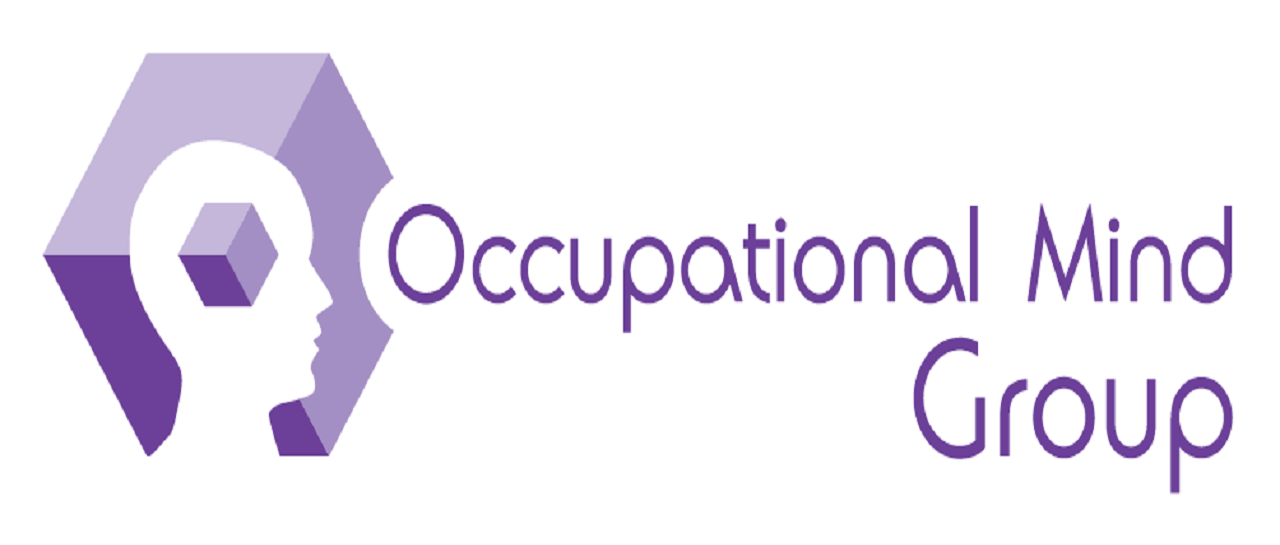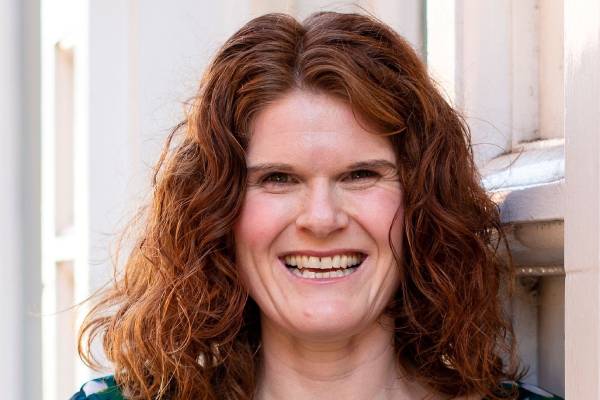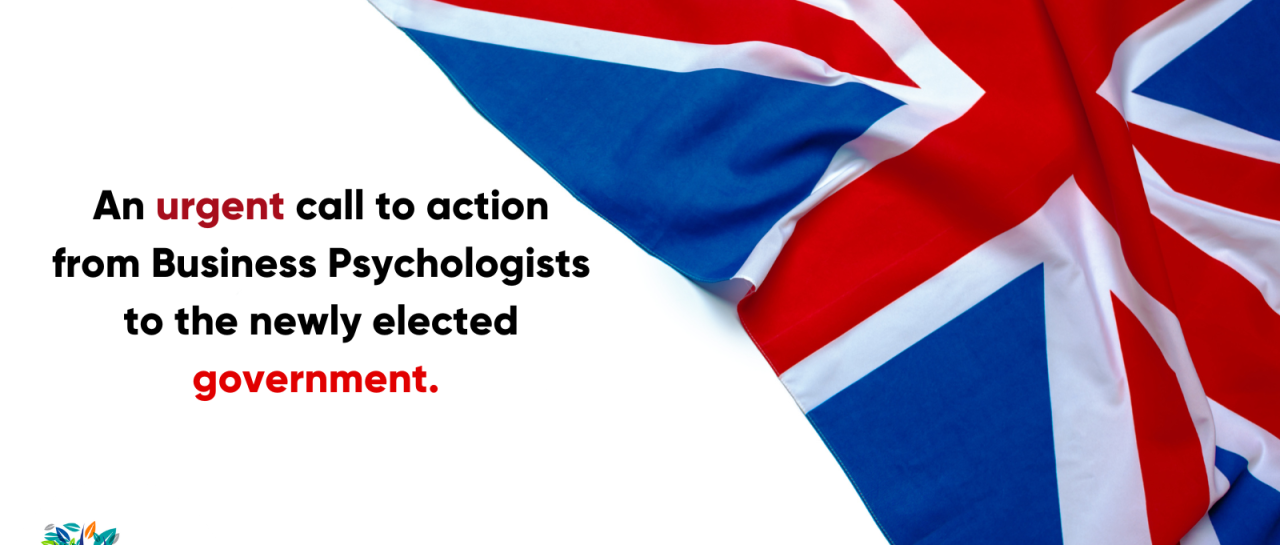Authored by Certified Business Psychologist Laura Howard. Certified Business Psychologist, Laura Howard, reflects on the webinar she recently delivered to ABP members. Below she outlines the main findings of her published research uncovering systematic barriers women face when being authentic as leaders. Importantly, she gives…

“Two roads diverged in a wood – I took the one less travelled and that made all the difference”. This quote from American Poet Laureate Robert Frost accurately describes the dilemma facing organisations as they strive to foster better working environments and improve efficiency, argued Award Winner Sarah Clarke as she delivered an impressive presentation on her work delivering employee led culture change.
While much is written and discussed about the importance of good leadership, culture is about what we see, what we say, and the most difficult to address, what we believe, as defined by underlying assumptions. Challenging these assumptions requires a seismic shift, requiring not just innovation, which is about implementation, but understanding the science of human behaviour to adapt the way we think and understand the assumptions we make.
Creativity is about coming up with a new and useful idea (Amabile, 2011) and innovation is implementing, delivering or realising this idea to deliver a benefit. For example, Kodak was creative and came up with the new and useful idea of digital photography, but they failed to deliver which history now tributes to the assumptions of the Board – they couldn’t imagine a world with no ‘printed’ photographs. Fuji was less creative and it was 10 years before they designed digital photography but then they innovated and delivered digital photography solutions to the point Fuji is still in business making billions and Kodak declared bankruptcy in 2012.
“Organisational culture is ‘the shared values, beliefs and norms that influence employees in terms of feelings, cognitions and behaviours”. In 2016 Sarah’s research showed how culture moderates the relationship between leadership quality (measured by LMX) and the level of employee engagement. Schaufeli & Bakker (2004) defined Employee Engagement as “a positive, fulfilling state of mind that results in behaviours of working hard, persisting despite setbacks, whilst being happy and absorbed in the work”. A plethora of research shows how employee engagement delivers higher productivity. But what has been interesting about this work is the emerging importance of subordinate attitudes and behaviour in the context of leader-member exchange, where the quality of employee engagement can define leadership success, and that the ‘way we do things’ (the culture) mediates this relationship.
The Occupational Mind Group has set about to explore how the organisational climate, which is ‘the shared meaning organisational members attach to the events, policies, practices, and procedures they experience and the behaviours they see being rewarded, supported, and expected’ (Ehrhart, Schneider, & Macey, 2014) can influence the quality of engagement and leadership. While it was clear that a negative climate would have a hugely negative impact on the organisation the extent of a positive climate and correlation with positive impact was less clear. To what extent would elements of Trust, Openness, Personality, leadership style be influenced by the climate? How can a climate be assessed? How do you define a ‘positive’ or ‘negative’ organisational climate? There are naturally many elements in a climate of creativity, including, for example, pushing for extra performance, pride in citizenship and getting the best out of people, all of which can lead to profitability and additional added value. These nuances, including how the variables impact each other, have been what the Occupational Mind team have become experts in – as the challenge is that there is never a right answer and it depends largely on who you ask.
The Occupational Mind Group understand that the challenge of changing an organisations climate, and subsequently culture, has to be tackled as a medium to long-term project. There are a handful of climate issues which can often be addressed, helping partially solve a negative culture, but these are the simpler (but often not simple) ‘quick wins’ that can at least start to create a foundation for further cultural change and progression. Sarah used a simple analogy of a Rubik’s cube. Much of the initial attempts are about getting the groundwork and understanding in place, but time and time again attempts to solve the problem did not work, often at great cost to the business, because the real issue/problem was not being addressed.
For example, a manufacturing organisation had two high performing, two medium performing and one poorly performing manufacturing units. Efforts were made to remedy, including new leaders and attempts to copy high performing sites, with little impact. The Occupational Mind Group conducted a cultural diagnosis and started by unpicking the real issue, using a detailed diagnostic processes and drilling down. Unsurprisingly, but challengingly, all issues emerged which showed that behind the superficial manifestations was one common thread: “we (the employees) know we are underperformers” and a belief there could never be an improvement. This was reinforced by an attitude at Head Office which said that “we (Head Office) cannot give money to them” and “we can’t give in to them”. Once this issue was understood a cultural change plan was delivered over 18 months at an individual, team and organisational level which showed a 40% improvement of performance of the poor performing unit.
Another example was a fair/ethical retailer which had a high turnover of staff which suffered disproportionately in a downturn. What was found was a “culture of seniority”, which automatically promoted people to positions where they could have their own privileges, which undermined the real reason people wanted leadership positions and fuelled the hierarchical, and ineffective, culture. What seems to work in all situations is making the employee more visible, understanding their needs and ensuring honest, fair and transparent communication. There is no short-term solution and it can take a year or longer to rebuild an under-performing culture. Addressing the following elements can make a real difference:
- Clarity – what is our purpose?
- Challenge – what do we need to achieve and how?
- Change orientation – how much capacity is there for change?
- Autonomy – how accountable or independent are people?
- Recognition – does the company appreciate me?
- Involvement – how committed/trusting are people?
Sarah shared a case study which involved a Manchester based software company which had grown rapidly and had run into problems. The company was continuing to be run as a small business but as it grew control was being lost, and despite undergoing more and more staff training, introducing various changes including management training the employee engagement was continuing to drop and sickness absence was continuing to increase year on year, despite a focus from HR on managing sickness. A full diagnosis was undertaken based on the last few years of employee surveys, and using personality, motivation and competence profiling the Managing Director identified himself that he was in the ‘wrong’ job. His skills, which had led him to found the company, meant his preferences and skills lay in product development and governance of the organisation. The Occupational Mind Group worked in partnership with the Board to deliver a culture change plan bespoke to the needs of the market leading software company. This included addressing some of the following issues:
- There had been little or virtually no organisational design
- Job titles did not reflect the work or status: for example the term “manager” appeared unnecessarily in many job descriptions and caused friction between individuals
- Individuals got over-involved in the detail of each other’s work to the detriment of goal setting and quality
The solution was found through engaging with employees, who were highly loyal, and included:
- Delivering a new employee led organisational design based on skills and expertise, with a new CEO and Board with clear roles and responsibilities to support the Managing Director moving on to a new role of Chairperson
- Updating all working practices, and conditions, to ensure they were reasonable and equitable based on employee feedback (quantitative and qualitative)
- Developing a more robust L&D programme for all Managers and leaders which links to the strategic objectives of the business
- Creating a framework for culture change by creating a more transparent atmosphere which was more conducive to trust, resulting in employees ‘opening up’ about how they envisage areas for improvement, and then empowering them to lead the improvements with the support from the leadership team
The solutions resulted in a 21% year on year growth in the first year and a CIPD People Management Award.
Sarah indicated that, as you would expect, it is easier to make an impact at the open minded SME tech companies which were not riven with company politics, making it easier to gain results in a short-time frame that with the larger conglomerates. Like a Rubiks cube, it is important to understand what the finished cube needs to look like and then work from the existing state, sometimes appearing to go backwards, to deliver the cube required. In the past, working with the British Quality Foundation, or Investors in People, Top 100 companies accreditation could be helpful for businesses but it did not guarantee results.
In line with Simon Sinek’s theory of why all organisations need to ask the following Golden Circle questions:
* Why do we (the organisation or the employees) do what we do?
* How are we doing it?
* What are we doing?
But it is the “Why?” which should attract the focus, as it is the “Purpose” which is central to “Beliefs” and creates the fundamental culture of any organisation. If this it is not defined, or clear, or the ‘what is said’ vs ‘the reality’ then people will have their own interpretation of ‘why’ an organisation exists. Think of a Rubiks cube some people complete them because they can, some to beat their friends, some as they enjoy it and others by pure luck and can then never complete the cube again, whereas others cheat and use the 27 steps available on the internet. Sarah repeatedly returned to this example as organisational culture is similar. Sometimes it can be solved in a straightforward fashion by identifying a few simple moves, or it can take many many more moves and much more time. The same principles apply to finer and more complex cubes, with the same principles applying to much more complex organisations. Culture can be changed in both qualitative and quantitative ways but all solutions need to involve teams, individuals and the organisation itself. If you change one side of a cube and think it is finished, this impacts the other sides, and this is the same for organisational culture, which could also be seen as a set of separate but interrelated cubes, and the sporadic training to solve the current symptom will not drive successful cultural change. Culture is what leads when no one is looking, and all organisations have stories which are told by employees and give insight into an organisations ‘true’ culture. As few as 5-6 stories can be a good basis for identifying problems, especially when they pick up on a thread which features in a related story. But our own assumptions can often cloud this so a qualified Psychologist who understand human behaviour can help interpret the stories being told. This allows organisations to develop and adapt the stories of tomorrow which drives climate, and then culture, change. But like any good story it needs to be authentic, giving people purpose, affiliation and autonomy to be part of the story they are interested in. In conclusion, the employees are the experts in their own culture and by working on the following cultures can be improved, which leads to real benefits for businesses, including high growth of teams and the bottom lines.
RT
30 June 20



